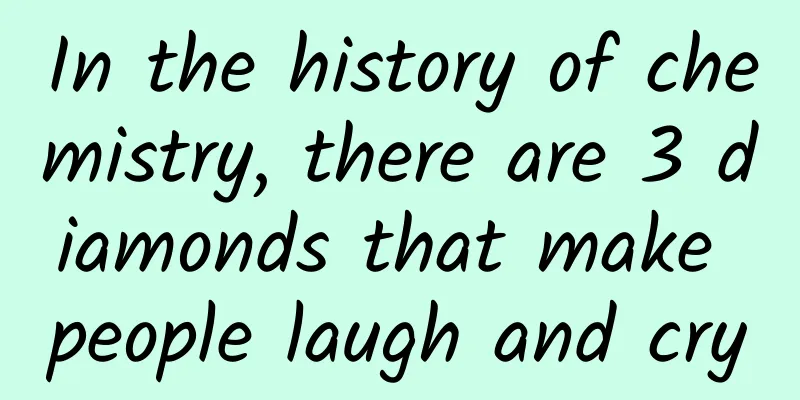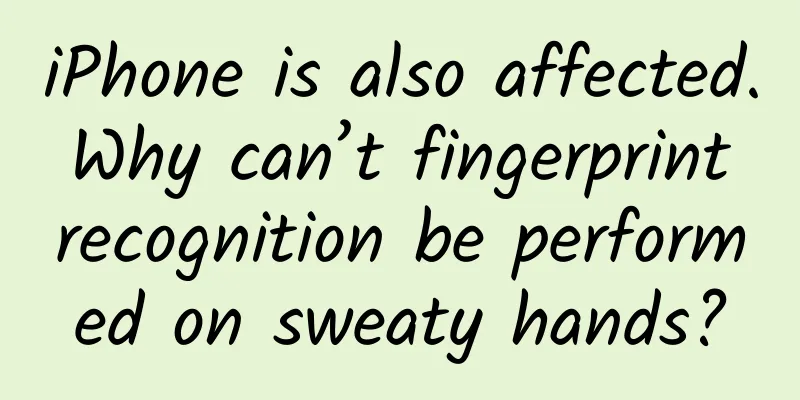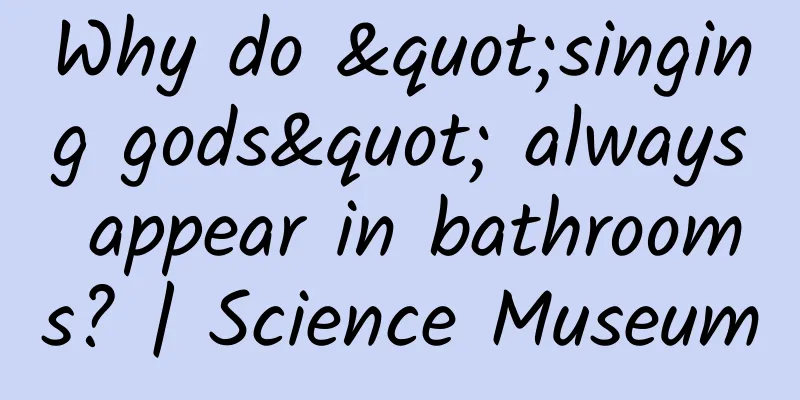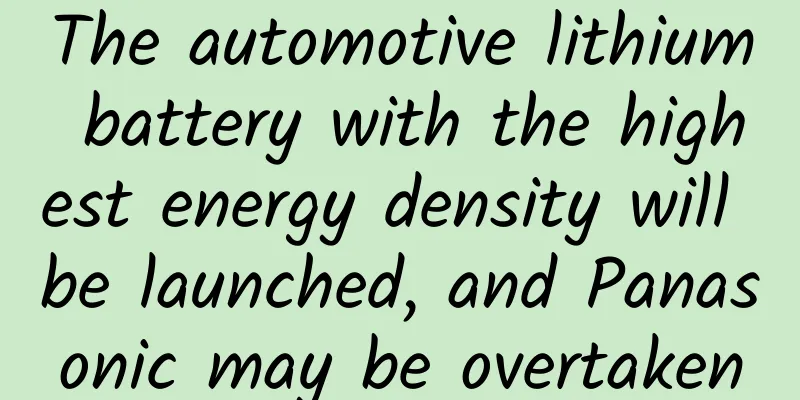In the history of chemistry, there are 3 diamonds that make people laugh and cry

|
Diamond is the hardest substance known in nature. The diamonds that people are familiar with are the products of gem-grade diamonds that have been polished. Diamond has excellent properties in sound, light, electricity, magnetism, heat, etc. It is known as the "king of materials" and is one of the most promising materials in the 21st century. Picture/Internet For our country, mass production of artificial diamonds is no longer a difficult task. As early as October 26, 2021, Henan Business Daily reported that more than 95% of the world's artificial diamonds are produced in Henan. On September 19, 2023, a commemorative event to celebrate the 60th anniversary of the birth of artificial diamonds in China was held in Zhengzhou. According to the news released at the event, in 2022, the production of artificial diamonds in Zhengzhou has reached 2.39 billion carats. So, how did scientists come up with the idea of creating artificial diamonds? Two diamonds paid for interest In 1772, Lavoisier, known as the "Father of Modern Chemistry", became interested in diamonds. He spent all his savings to buy a diamond and study it. He placed the diamond in a high temperature and heated it to a fiery red. As a result, he found that the diamond actually burned and disappeared in a wisp of smoke, which shocked and saddened him. How could he not be heartbroken when the diamond he spent so much money on was gone? Burning Diamond Image/Network In 1799, French chemist Morveau also used up all his savings to buy a diamond for his fiancée. Just as he was about to give the diamond to his beloved, he accidentally came across a document written by Lavoisier about the combustion of diamonds, and he became interested. He thought, since diamonds can burn when heated to high temperatures in the air, what would happen if diamonds were placed in a vacuum and heated even higher? This question lingered in his mind, and finally he decided to use this diamond that cost him all his savings to conduct an experiment to find out the truth. After some preparation, the experiment officially began. When the reaction lasted long enough, Morvo opened the reaction device and was surprised to find that the diamond did not disappear, but turned into graphite. In the blink of an eye, the diamond turned into graphite. This result was so ridiculous. This was half a lifetime of savings! This was a gift for his fiancée! The cost of this experiment was really high. However, when Morvo announced the results of the experiment to the outside world, the whole of Europe was boiling. The protagonist of "Turning Stone into Gold" is Moissan Since diamond can be transformed into graphite by increasing heat in a vacuum, it means that under certain conditions, graphite can also be transformed into diamond! How much profit will be generated by using worthless graphite to make priceless diamond? It really makes people laugh even in their dreams! Many scientists immediately threw themselves into this game of "turning stone into gold", and French chemist Moissan was one of them. Moissan designed the first experimental plan: since he was an expert in fluorine, he wanted to use the elemental fluorine to react with graphite to transform it into fluorocarbon, and then use a certain method to remove the fluorine to see if diamonds could be obtained in this way. Soon, this experimental plan was rejected, as this method could not produce diamonds at all. Carbon and Diamond Diagram/Network Later, Moissan designed a second experimental plan: he first used the Mohs electric furnace he invented to melt iron into molten iron, then put graphite into the molten iron, and then poured the molten iron mixed with carbon into cold water to rapidly cool it. He wanted to use the huge pressure generated by the rapid cooling and contraction of iron to force carbon atoms to arrange in order into the crystal structure of diamond, and then use acid to dissolve the iron to obtain diamond. Moissan was very confident in his plan and called it the "perfect plan." So, Moissan and his assistants began to experiment again and again. They kept failing, and then they kept changing the conditions to do it again. Moissan's almost paranoid personality supported these experiments over and over again. One day in 1893, Moissan and his assistant completed an experiment that they had repeated many times. They had lost the excitement and anxiety they had when they first started the experiment. They were calm because this experiment did not seem to be much different from the previous ones. But when they were carefully cleaning the black residue left by the experiment, the sharp-eyed assistant suddenly made a strange cry. It turned out that there was a shiny thing shining in the residue - a diamond with a diameter of 0.7 mm. Moissan shed tears of excitement. All the days and nights of hard thinking and waiting became extraordinary at this moment. He immediately reported the experimental results to the French Academy of Sciences. Europe was once again in an uproar. Everyone believed that in the near future, Moissan would become the richest man in the world because he had mastered the secret of "turning stone into gold". Surprisingly, Moissan was not interested in money. After he made artificial diamonds, he did not mass-produce them, but immediately turned to other scientific research. Moissan could not produce artificial diamonds In 1906, Moissan successfully defeated Mendeleev, the master of chemistry at the time, and won the Nobel Prize in Chemistry with his many amazing discoveries in the field of science. At that time, there were 10 members of the Royal Swedish Academy of Sciences who were eligible to vote, of which 4 voted for Mendeleev, 1 abstained, and the remaining 5 voted for Moissan. In 1907, Mendeleev passed away and missed the Nobel Prize in Chemistry. But strangely, the reason announced at that time for Moissan's award was "in recognition of his outstanding contribution to the preparation of elemental fluorine and in recognition of his invention of the Moissan electric furnace", and there was no mention of artificial diamonds, although Moissan repeatedly emphasized his pioneering work in synthesizing artificial diamonds in his award acceptance speech. Why is this? When Moissan reported his experimental results to the French Academy of Sciences, since he was a well-known scientist, the French Academy of Sciences directly announced to the outside world that Moissan had created artificial diamonds. The French Academy of Sciences made a mistake and did not conduct verification. In fact, it was impossible to obtain artificial diamonds under the experimental conditions at that time. Because to produce artificial diamonds, it is necessary to use devices that can generate high pressure and equipment that can withstand high temperature and high pressure. The Nobel Prize in Physics in 1946 was awarded to American scientist Professor Bridgman for his invention of a device that can reach extremely high pressures and his important discoveries in the field of high-pressure physics. Only then did it become possible to produce artificial diamonds. In 1955, American scientists Hall and others synthesized artificial diamonds at 1,650°C and 95,000 atmospheres, and repeated the process many times under similar conditions. The synthesized material was also tested physically and chemically and confirmed to be diamond. However, this was 62 years after Moissan's claim of "success". The third diamond purchased to end the experiment So, what about Moissan’s diamond? After Moissan announced that he had made artificial diamonds, he turned to other research. Many European scientific research institutions and diamond dealers could not get the secrets they wanted during Moissan's lifetime, so they found his widow after his death and wanted to buy his research manuscripts. Finally, some businessmen bought Moissan's experimental records at a high price. They were overjoyed and immediately started experiments, hoping to make a large number of diamonds in a short period of time and become rich overnight. Can you tell the difference between natural diamonds and artificial diamonds (right)? Photo/Visual China Unexpectedly, no matter how these people conducted the experiment, they could not get the diamonds they wanted. None of the experiments were successful, and not even a trace of diamonds could be seen. These merchants were angry. They felt cheated. It must be that Moissan's widow did not sell them the real manuscript. So these people went to Moissan's widow to ask for an explanation and asked her to hand over the real experimental plan. Moissan's widow also felt very aggrieved. She had clearly given the manuscript intact to those people. How could she be blamed for the failure of the experiment? Finally, she was forced into a corner and had to go find the assistant who had conducted the experiment with Moissan, hoping that he could find out why their experiments had failed. What no one expected was that Moissan's assistant told a shocking secret. It turned out that after the experiment failed again and again, the assistant advised Moissan to give up the experiment, and it was very likely that the plan was wrong in theory. But the paranoid Moissan ignored the assistant's advice. He firmly believed that the second plan he designed was the "perfect plan" and just urged the assistant to continue changing the conditions and continue the experiment. The assistant's patience was exhausted by the repeated failures. He felt that this was simply a waste of time, and Moissan seemed to be unwilling to give up until he achieved his goal. After this painful and repeated torture, the assistant took out his savings and bought a very small diamond. After another failed experiment, the assistant took advantage of Moissan's inattention and threw the small diamond he bought into the reaction container, and then there were the stories we mentioned before. Today's artificial diamond production "laboratory" Photo/Visual China The truth came out. It turned out that Moissan had never made artificial diamonds. It all seemed like a joke played by God on him. By Geng Yanbing |
>>: This "super-Earth" with a scorching hot surface has only existed in space for half a day?
Recommend
Uncle Wolf's Toutiao Traffic Drainage Technology 9th Course Video
Course Outline 1. The traffic-generating advantag...
I am money cold auction 35-43 (video + courseware) worth more than 3,000 yuan
I am money See more articles about I Am Money The...
Are species more abundant where wildfires occur frequently? Plants are more resistant to fire than we thought
Wildfires cannot be extinguished, and spring bree...
SIA: Global semiconductor sales reached US$46.2 billion in February 2024, an increase of 16.3% over the same period last year
The Semiconductor Industry Association (SIA) anno...
What to do if you accidentally lose your phone? It is crucial to do these things!
Nowadays, mobile phones have become a necessity f...
Is the era of pirated broadcasting 2.0 here? The "overstepping the line" videos in the box
At least some box manufacturers have tacitly accep...
The most effective App promotion channels, a summary of strengths!
What are the most effective App promotion channel...
Useful Information Collection | How to Scientifically Distinguish Giant Pandas? (Except "Huahua")
Eat, sleep, climb trees, roll around Just a few s...
4 stages and 8 methods to attract new members and retain new members in WeChat groups
The community is the most effective and convenien...
Monthly sales of tens of millions Douyin live broadcast account full set of teaching, natural flow + Qianchuan flow + short video traffic, three-frequency resonance to explode the live broadcast room traffic
Monthly sales of tens of millions of Douyin live ...
Honor lives in Huawei's shadow
"We are alive again, we are back again,"...
Good news for the US version of Nexus 5: native mobile 4G rhythm
The US version of Nexus 5 can actually support CD...
This special gut bacteria may be the secret to longevity?
World's oldest person, Japanese Tanaka Kane, ...
Beijing Hyundai confirms that four major factories will be shut down for a week and the annual sales target will be lowered
After the news that Beijing Hyundai's five ma...









